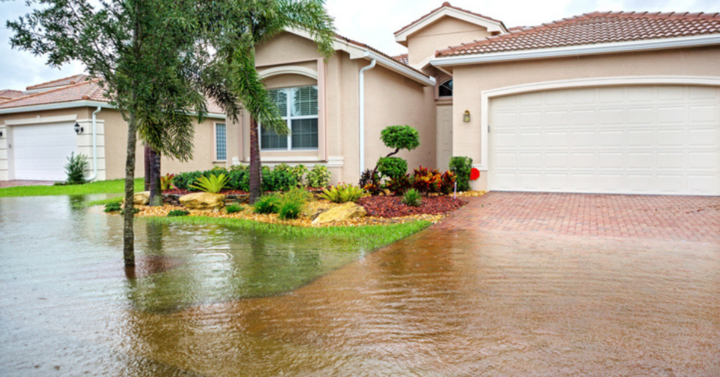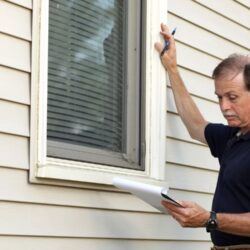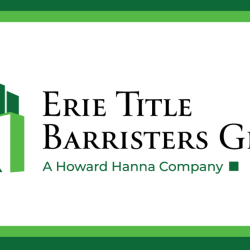By: Danielle Shearer
Understanding Your Risks and Protecting Your Future
Introduction
Floods rank among the most destructive natural disasters, impacting communities across the globe with little warning. Each year, countless homes and businesses find themselves coping with the repercussions of rising waters—sometimes in places where flooding was never anticipated. Amidst shifting climate patterns and urban development, the question arises: Is everyone in a flood zone? And, perhaps more importantly, why should individuals and businesses consider flood insurance—even if they believe they are safe? This article unpacks these questions, dispels common myths, and explains why flood coverage is a cornerstone of responsible property protection.
Is Everyone in a Flood Zone?
When discussing flood risk, many people immediately think of coastal towns, riverfront communities, or regions prone to hurricanes. However, the reality is more nuanced. In the insurance industry, the term “flood zone” refers to a geographic area designated by the Federal Emergency Management Agency (FEMA) in the United States, or by similar regulatory bodies worldwide, as being at risk for flooding. These zones are mapped based on historical data, rainfall patterns, topography, and proximity to bodies of water.
Flood zones are categorized from high risk to moderate or minimal risk. For example, FEMA labels high-risk zones as “Special Flood Hazard Areas” (SFHAs), while moderate-to-low risk areas fall under different designations. But here’s the critical point: every property is in a flood zone. The difference lies in the level of risk assigned to each zone. While some locations have a statistically higher chance of experiencing a flood, no area is completely exempt.
Statistics reveal a surprising truth: more than 20% of flood insurance claims originate from properties outside of mapped high-risk flood zones. Flooding can—and does—occur anywhere it rains. Urban development, poor drainage systems, unexpected weather events, and even infrastructure failures can turn “safe” areas into flood disaster zones overnight.
Why Flood Insurance Is Important
The Limitations of Standard Property Insurance
One of the most pervasive misconceptions in the insurance market is the belief that standard homeowners or commercial property policies automatically cover flooding. In reality, most policies specifically exclude flood damage. That means the cost to repair or replace your property after a flood can fall entirely on your shoulders unless you carry a separate flood insurance policy.
Protection Beyond Geography
Flood insurance isn’t just for those living in high-risk zones. As mentioned earlier, floods can happen anywhere. Heavy rainfall, rapid snowmelt, blocked storm drains, broken water mains, or construction can all result in flooding outside traditional flood plains. The unpredictability of weather and climate change has made it increasingly difficult to rely solely on historical flood maps for risk assessment.
Financial Safeguard and Peace of Mind
Without flood insurance, homeowners and business owners can be exposed to immense financial risk. The average flood claim in the U.S. can amount to tens of thousands of dollars. The damage can extend beyond the structure to include personal belongings, inventory, equipment, and even lost income during repairs. Flood insurance provides a critical safety net, ensuring that recovery is possible and that families and businesses can rebuild without catastrophic financial loss.
Coverage Details: What Does Flood Insurance Include?
Flood insurance policies typically cover:
- Structural damage to the building or home (walls, floors, ceilings, foundation, etc.)
- Electrical and plumbing systems
- Central air conditioning equipment, furnaces, and water heaters
- Appliances such as refrigerators, washers, and dryers
- Personal property, including furniture, clothing, and electronics
- Business inventory and equipment
Some policies also offer coverage for relocation expenses and temporary living costs if the property becomes uninhabitable.
Frequently Asked Questions
How Do I Know My Flood Risk?
Flood risk is determined by a combination of location, elevation, proximity to water bodies, local weather patterns, and changes in the landscape due to development. Tools like FEMA’s Flood Map Service Center can help identify your official flood zone, but insurance professionals recommend considering coverage even if you are in a low-risk area. Remember, every property has some level of flood risk.
Can I Get Flood Insurance If I’m Not in a High-Risk Zone?
Absolutely. Flood insurance is available to property owners and renters in both high-risk and moderate-to-low risk areas. In fact, premiums are often lower for those outside high-risk zones, making coverage an affordable investment.
Is Flood Insurance Expensive?
The cost of flood insurance varies depending on your flood zone, the type of property, coverage limits, and other factors such as elevation. For many homeowners, especially those outside SFHAs, premiums can be surprisingly reasonable. The cost of coverage is negligible compared to the potential expense of flood damage.
Does Flood Insurance Cover All Types of Water Damage?
Flood insurance specifically covers damage caused by “rising water”—such as storm surges, heavy rains, and overflowing rivers. It does not typically cover water damage from plumbing failures, sewer backups, or leaks unrelated to flooding. It’s important to review your policy details with an insurance expert to understand what is and isn’t covered.
How to Secure Flood Insurance
Obtaining flood insurance can be straightforward. In the United States, the National Flood Insurance Program (NFIP) offers policies through participating insurers. Many private insurers also offer flood coverage, sometimes with broader protections or higher limits. Contacting your insurance agent for a flood risk assessment and policy quote is the first step toward safeguarding your property and peace of mind.
Tips for Policyholders
- Review your current property insurance to confirm if flood coverage is included (it usually is not).
- Assess your flood risk using official maps, but keep in mind that risk is never zero.
- Consider both structure and contents coverage for comprehensive protection.
- Ask your insurance agent about waiting periods—flood insurance often does not take effect immediately.
- Document your property and belongings with photos and inventories for claims processes.
Conclusion
Floods respect neither boundaries nor expectations. Whether you live on a picturesque coast, a bustling city block, or a peaceful rural lane, your property is in a flood zone—because flood risk is universal, even if the probability varies. Flood insurance is a crucial tool to mitigate that risk, offering financial protection, peace of mind, and the assurance that you can weather the storm, wherever it may strike. Responsible property ownership means understanding your risks and making informed decisions. Ask your insurance professional about flood coverage today, and take a proactive step toward securing your future.
About Howard Hanna
Howard Hanna Real Estate Services proudly provides real estate, mortgage, title, and insurance services across 14 states. As the largest family-owned and -operated real estate brokerage in the United States, Howard Hanna operates more than 500 offices with 15,000 sales associates and staff. The company’s proprietary Hanna Success System helps its agents achieve 53% more business than agents at the top 1000 brokerages nationally. Learn more at www.HowardHanna.com.










